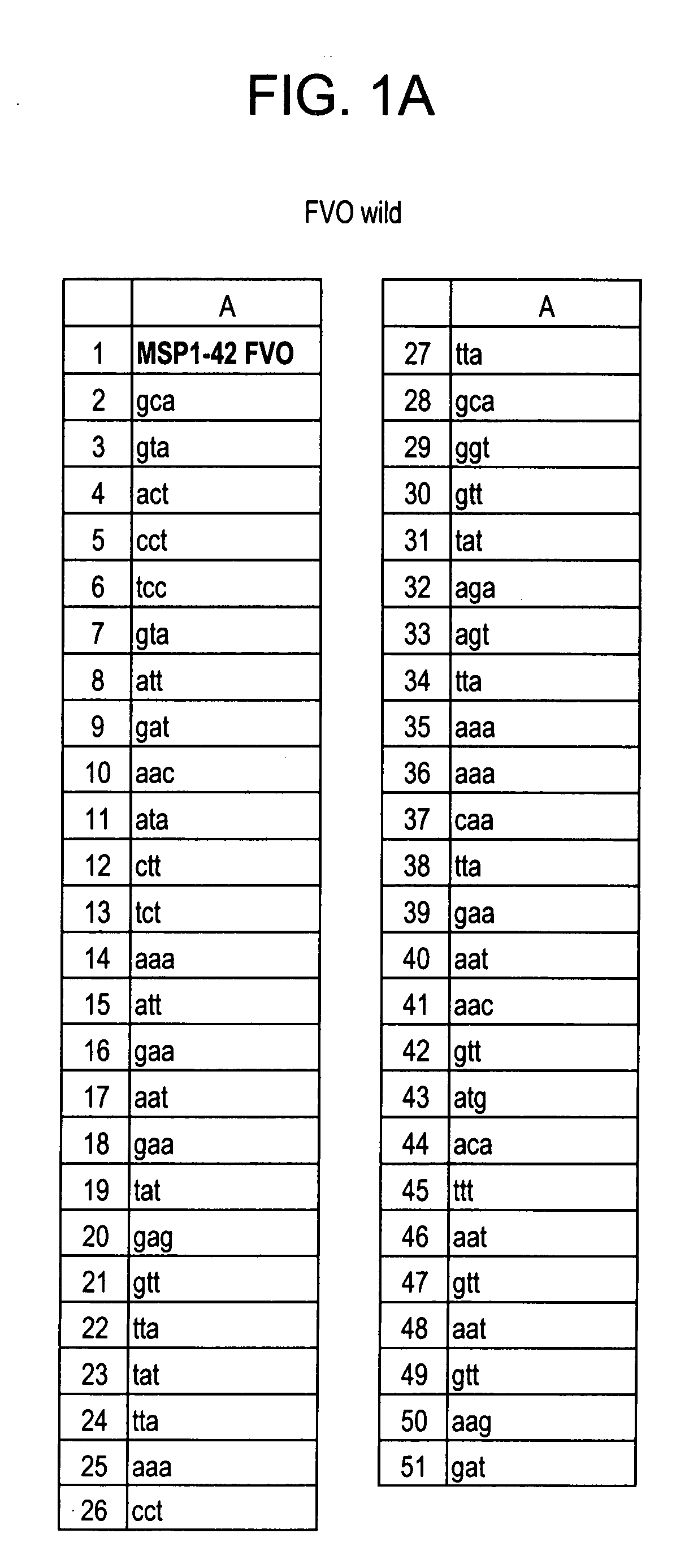Method of designing synthetic nucleic acid sequences for optimal protein expression in a host cell
a technology of synthetic nucleic acid sequences and host cells, applied in the field of gene engineering, can solve the problems of host cell expression of foreign genes, toxicity of gene products, and the level of rna produced, and achieve the effect of improving the solubility of said proteins and improving protein accumulation
- Summary
- Abstract
- Description
- Claims
- Application Information
AI Technical Summary
Benefits of technology
Problems solved by technology
Method used
Image
Examples
example 1
[0073] Expression of LSA-NRC protein using “optimized” codon usage or “harmonized” codon usage in lsa-nrc gene construction.
[0074] In this research, expression, purification and characterization of a recombinant P. falciparum LSA-1 gene construct, lsa-nrc, was undertaken with the aim of producing GMP grade protein for development as a pre-erythrocytic vaccine. The LSA-NRC protein contains the highly conserved N- and C-terminal regions and two 17 amino acid repeat units of the 3D7 sequence of the P. falciparum LSA-1 protein. Two distinct approaches were undertaken to improve the protein yield by genetically re-engineering the gene sequence from the original P. falciparum sequence. In the first approach the gene construct was designed using the highest frequency codons in E. coli, ie the gene was “optimized”. In the second approach, the gene construct was designed by “harmonizing” translation rates, as predicted by codon frequency tables, between P. falciparum and E. coli, to more cl...
example 2
[0076] Coomassie Blue stained SDS-PAGE for Partially Purified Wild type MSP1-42 (FVO) vs. Single Site pause mutant (FMP003).
[0077] We found that the levels of soluble MSP1-42 (FVO) protein obtained following induction of BL21 DE3 cells expressing the wild type gene sequence, pET(AT)FVO was negligible and insufficient to advance for further process development. Rather than simply changing to a new expression system, such a Pichia, or baculovirus, we chose to try to fix this problem owing to the advantages that E. coli offers, especially with respect to expression of non-glycosylated protein. Our initial thinking was that it might be important to preserve ribosomal pausing at certain times during translation to allow for protein folding. We thought that we might achieve this by analyzing the target gene to reveal clusters of low abundance codons and changing those codons if necessary (harmonizing) so that they would be low abundance in the expression host (in this case E. coli). For ...
example 3
[0079] Coomassie Blue stained SDS-PAGE on Partially Purified MSP1-42 (FVO) (Wild type vs. Single Site pause mutant (FMP003) vs. Initiation Complex harmonized (FMP007))
[0080] While the FMP003 product was estimated to yield approximately 10 fold more soluble MSP1-42 than wild type sequence, the final product yield, at 1 mg / L, was still insufficient for advanced development where target product yields are in the range of 100 mg / L. Therefore, for the second approach, E. coli codons were harmonized to P. falciparum codons with the objective of preserving high and low usage rates in the region of the initiation complex. A hypothesis is that stabilizing the interaction of the ribosome on the initiation complex might lead to increased levels of translation, or that translation from a properly harmonized initiation complex might allow for the initiation of proper protein folding. Again, using existing codon frequency tables referred to above, we applied the same process more broadly to reve...
PUM
| Property | Measurement | Unit |
|---|---|---|
| Frequency | aaaaa | aaaaa |
Abstract
Description
Claims
Application Information
 Login to View More
Login to View More - R&D
- Intellectual Property
- Life Sciences
- Materials
- Tech Scout
- Unparalleled Data Quality
- Higher Quality Content
- 60% Fewer Hallucinations
Browse by: Latest US Patents, China's latest patents, Technical Efficacy Thesaurus, Application Domain, Technology Topic, Popular Technical Reports.
© 2025 PatSnap. All rights reserved.Legal|Privacy policy|Modern Slavery Act Transparency Statement|Sitemap|About US| Contact US: help@patsnap.com



